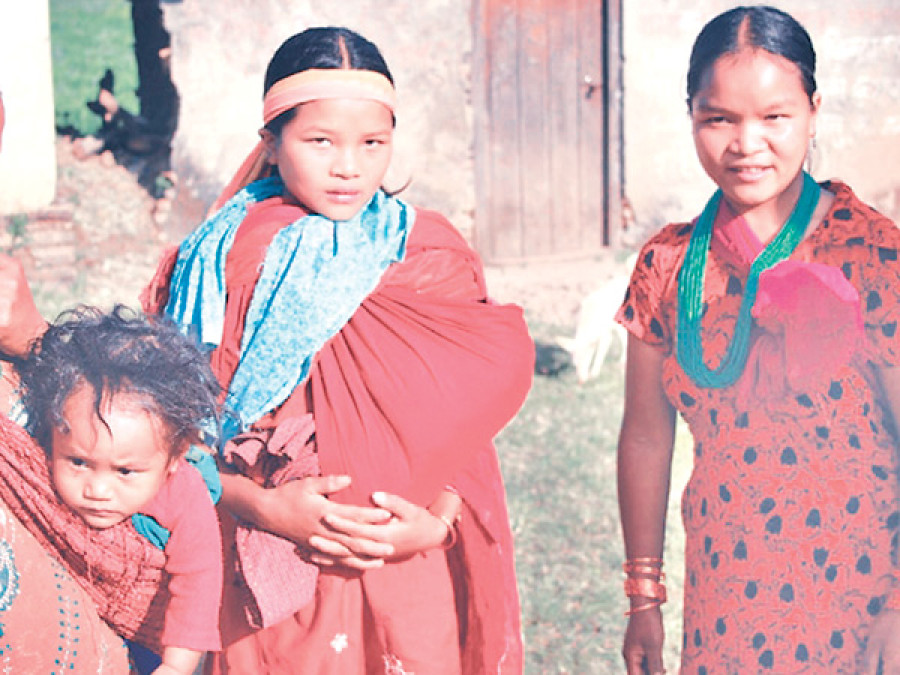Opinion
Too young to marry
Political leaders must move to end child marriage by considering it a national issue
Asmita Verma
The first Girl Summit in Nepal, co-hosted by the UK and Unicef, was held in Kathmandu on March 23. In the run-up to the event, which aims to fight child marriage worldwide, multiple district consultations were held in 15 districts with a high prevalence of child marriage. The summit brought together youths, activists, government officials, diplomats, statesmen, UN representatives, religious leaders and civil society and community members to intensify the effort to end child marriage by 2030. Child marriage has existed from time immemorial in Nepal. Until about a few decades ago, it was common to hear stories of children as small as six to eight years old being married in matches arranged by parents.
Despite child marriage being illegal, it is not unusual. Nepal has one of the highest prevalence of child marriage in the world and the third highest in South Asia after Bangladesh and India. According to Unicef, two out of 10 women aged 15-49 years in Nepal were first married before the age of 15 while five out of 10 women aged 20-49 years were first married before the age of 18. Child marriage is common in many parts of the world. Thousands of incidences ranging from injury to death resulting from pregnancy complications due to child marriage are reported annually. This is a violation of human rights, compromising the development of girls and often resulting in early pregnancy and social isolation. More than 700 million women today were married before their 18th birthday. That is equivalent of 10 percent of the world’s population. If there is no reduction in child marriage, an additional 1.2 billion girls will be married by 2050.
Against the practice
Adolescence is a period of transition from childhood to adulthood. It is a time of physical, social and emotional maturing, as a result of which the individual is prepared for adulthood. During puberty, girls become very conscious about their body changes. Since, puberty starts earlier in girls than in boys, their reaction to an increase in height may embarrass them as they find themselves taller than their male mates. An increase in weight due to fat deposition may be perceived negatively by adolescent girls. They may consider this as a sign of obesity and may attempt to reduce it by strict dieting which may be harmful as adolescence is the period of rapid body development.
A majority of girls perceive their budding breasts with pleasure as a sign of maturing and evidence of femininity and start wearing brassieres. In relation to breast enlargement, some girls may hide it whereas others are pleased with their new figure and so they try to show off by using tight clothing. By the time they reach the end of adolescence, their emotional state becomes more stable and they respond to problems or change calmly and rationally and control their emotions for a long time. Is it possible to take up family responsibilities as an adolescent? At the same time, psychological and physiological changes occur rapidly. In many countries, adolescent marriage is prohibited, but the existing laws are often not enforced or provide exceptions for parental consent or traditional and customary laws. Child marriage reinforces gender inequality and violates human rights. Tolerating any injustice makes it easier for others to exist. Child brides are often disempowered, dependent on their husbands and deprived of their fundamental rights to health, education and safety. They are neither physically nor emotionally ready to become wives and mothers. Child brides are at greater risk of experiencing dangerous complications in pregnancy and child birth, becoming infected with HIV/AIDS and suffering domestic violence. With little access to education and economic opportunities, they and their families are more likely to live in poverty. For all these reasons, child marriage has to be eliminated globally without any delay.
In the case of Nepal
In Nepal, it is estimated that over 1.3 million adolescent girls are at risk of being married as children. The future of thousands of these children continue to be decided by adults who negotiate deals in which girls are treated like commodities. The veil of silence is slowly lifting, and the government has put the problem on the global agenda. The international community has agreed on a target to end these harmful practices through global goals. The cultural, social, economic and religious causes of child marriage result in the imprisonment of children in marriage without their consent. In a patriarchal society, marrying a girl young presumes that her sexuality, and therefore, her family’s honour, is being protected.
Education itself is a major protective factor for early pregnancy. The more years of schooling, the fewer number of early pregnancies. In addition to preventing early pregnancies, improvements in education levels focusing on sex education and reproductive health contribute to the attainment of the goal of achieving universal primary education. Child marriage is a crime where the perpetrators are parents, guardians and relatives. This makes the children reluctant to report it to their parents and even to the police. Children must be made aware that there are legal provisions restricting marriage before the age of 20 years. Political leaders have great influence and are in a unique position to help put an end to the marriage of children. There is a provision in the Constitution of Nepal regarding the prohibition of child marriage in the Article 39 (5). Village leaders, parents, girls and boys within communities can be extremely important in helping others take a stand against child marriage. They must include the issue of daughters in their political manifesto. Political leaders must take concrete steps to end child marriage by considering it a national issue.
Verma is a youth leader in the Nepali Congress




 18.12°C Kathmandu
18.12°C Kathmandu










